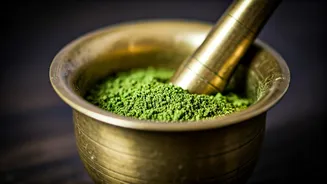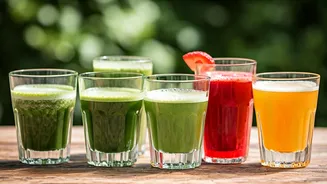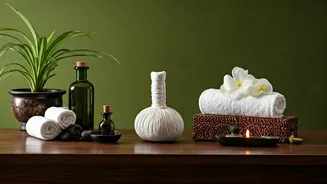Understanding Arthritis Ayurveda
Ayurveda regards arthritis, or Sandhivata, as an imbalance within the body's doshas. These doshas, Vata, Pitta, and Kapha, govern various physiological
functions. In the context of arthritis, an aggravated Vata dosha is often the primary culprit, causing dryness, stiffness, and pain in the joints. Furthermore, the accumulation of Ama, or toxins, in the joints can worsen inflammation and discomfort. Ayurveda seeks to restore balance by addressing these imbalances through dietary modifications, herbal treatments, and lifestyle adjustments. This approach aims to reduce inflammation, alleviate pain, and improve the overall functionality of the joints. The focus is always on treating the root cause, not just the symptoms, thus providing long-term relief and promoting overall health.
Dietary Adjustments for Relief
Dietary changes form a cornerstone of Ayurvedic arthritis management. Foods that aggravate Vata dosha, such as cold, dry, and processed items, should be minimized. Instead, a diet rich in warm, cooked foods is recommended. This includes easily digestible grains like rice and oats, cooked vegetables, and healthy fats such as ghee and olive oil. Incorporating spices like ginger, turmeric, and cumin into the diet can help reduce inflammation due to their anti-inflammatory properties. Adequate hydration is also essential, with warm water often preferred over cold. The aim is to create a diet that is nourishing, easy to digest, and supports the body's natural healing processes. A personalized diet plan, tailored to an individual's specific dosha imbalance, is usually recommended for optimal outcomes. Eating mindfully and at regular intervals further supports digestive health and overall well-being.
Herbal Remedies Explained
Ayurveda utilizes a range of herbal remedies to address arthritis symptoms. Several herbs have proven anti-inflammatory and pain-relieving effects. Turmeric, with its active compound curcumin, is a potent anti-inflammatory agent often used in various Ayurvedic formulations. Ginger, another common spice, offers similar benefits. Other herbs frequently employed include Ashwagandha, which helps manage stress and supports joint health, and Boswellia, known for its anti-inflammatory properties. These herbs are often administered in various forms, including capsules, powders, and medicated oils. These oils are typically used in therapies like massage, which can help increase blood flow, reduce stiffness, and ease pain. It is important to consult a qualified Ayurvedic practitioner to determine the appropriate herbal remedies and dosages, taking into consideration individual needs and potential contraindications. Such herbal treatments, when combined with other Ayurvedic practices, offer a comprehensive approach to managing arthritis.
Lifestyle Modifications for Support
Lifestyle changes play a crucial role in managing arthritis through Ayurveda. Maintaining a healthy daily routine, or Dinacharya, is essential. This includes consistent sleep patterns, regular exercise, and stress management techniques. Gentle exercises such as yoga and Tai Chi are particularly beneficial, as they improve joint flexibility and mobility without overstressing the joints. Avoiding strenuous activities and repetitive motions can further protect the joints. Stress can exacerbate arthritis symptoms; therefore, stress-reducing practices, such as meditation and deep breathing exercises, are highly recommended. Ayurveda also recommends certain massage therapies, such as Abhyanga, which can improve circulation, reduce muscle tension, and alleviate pain. Overall, adopting a balanced lifestyle that incorporates these modifications can significantly reduce pain and improve the overall quality of life for those with arthritis.
Ayurvedic Therapies Overview
In addition to diet, herbs, and lifestyle changes, Ayurveda offers specific therapies for managing arthritis. These include Panchakarma, a detoxification process designed to eliminate toxins (Ama) from the body. Panchakarma treatments involve various steps, including oil massages, herbal enemas, and nasal administrations, which support the body’s natural detoxification pathways. Applying medicated oils through massage (Snehana) helps lubricate the joints and reduce stiffness. Additionally, Swedana (steam therapy) can promote detoxification and reduce pain. These therapies are often customized based on the individual's dosha imbalance and the severity of their condition. It is important to receive these therapies under the guidance of a trained Ayurvedic practitioner to ensure safety and effectiveness. The overall objective of these therapies is to restore balance, reduce inflammation, and enhance the body's ability to heal itself.












